OSCM 373 sCh16Scheduling
Overview of Scheduling
Definition: Timing the use of human activities, equipment, and facilities.
Benefits of Effective Scheduling:
Cost savings
Increased productivity
Enhanced customer satisfaction and competitiveness
Scheduling Systems
1. High Volume Systems
Flow System: A repetitive process where all jobs follow the same sequence.
Flow System Scheduling Goals:
Ensure a smooth rate of flow for goods or customers through the system.
Achieve high utilization of labor and equipment, which involves line balancing.

2. Low Volume Systems
Job Shop Scheduling: Scheduling for systems with low volume but many variations in requirements.
Focus on make-to-order products.
Different processing requirements (materials, time, sequence) create a complex scheduling environment.
Firm schedules cannot be established until actual orders are received.
Scheduling Approaches
1. Forward Scheduling
Involves scheduling ahead from a specific point in time.
Example Question: "How long will it take to complete this job?"

2. Backward Scheduling
Scheduling backwards from a due date.
Example Question: "When is the latest this job can start and still be completed on time?"

Loading Strategies
1. Loading Definition
Assignment of jobs to processing centers.
2. Types of Loading
Infinite Loading: Jobs are assigned without regard for center capacity. May lead to overloading (requiring overtime, work shifts, or contracting out).

Finite Loading: Jobs are assigned considering center capacity and job processing times.

Gantt Charts
Definition: A visual aid for loading and scheduling, displaying actual or intended resource use in a time framework.
Managers use for trial and error schedule development
require constant updating
Types:
Gantt Load Chart: Shows loading and idle times for machines/departments.

Gantt Schedule Chart: Displays jobs in progress and their scheduling status.

Sequencing
Definition: Determines the order of jobs processed within a work center.
Priority Rules: Heuristics for selecting job processing order.
Priority Rules
FCFS (First Come, First Served): Jobs processed in arrival order.
SPT (Shortest Processing Time): Jobs with the shortest processing time processed first.
EDD (Earliest Due Date): Jobs with the earliest due dates processed first.
CR (Critical Ratio): CR = Time Remaining until due date / Remaining processing time. Lowest CR is processed first.
S/O (Slack per Operation): Average slack time is calculated. (time until due date - remaining processing time)/ remaining number of operations
RUSH (Emergency or rush jobs prioritized.

Sequencing Performance Metrics
Job Flow Time:
Time from job arrival to completion
Includes waiting time on top of processing time
Makespan:
Total time needed to complete a group of jobs from beg to end
Job Lateness:
Measures how much a job exceeds due date.
Average Number of Jobs:
Calculated as total flow time / makespan.
Jobs in shop considered WIP inventory
Application of Sequencing Methods
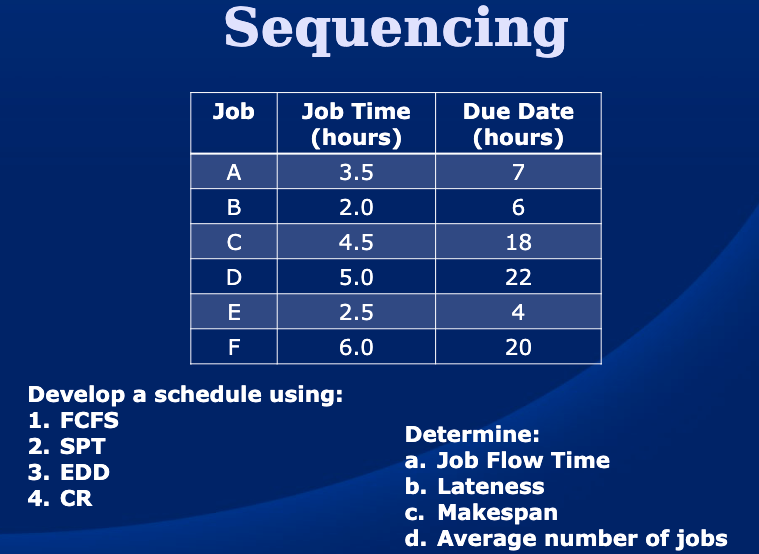
Examples
FCFS Example: Computed metrics such as total flow time, lateness, makespan, and average number of jobs.
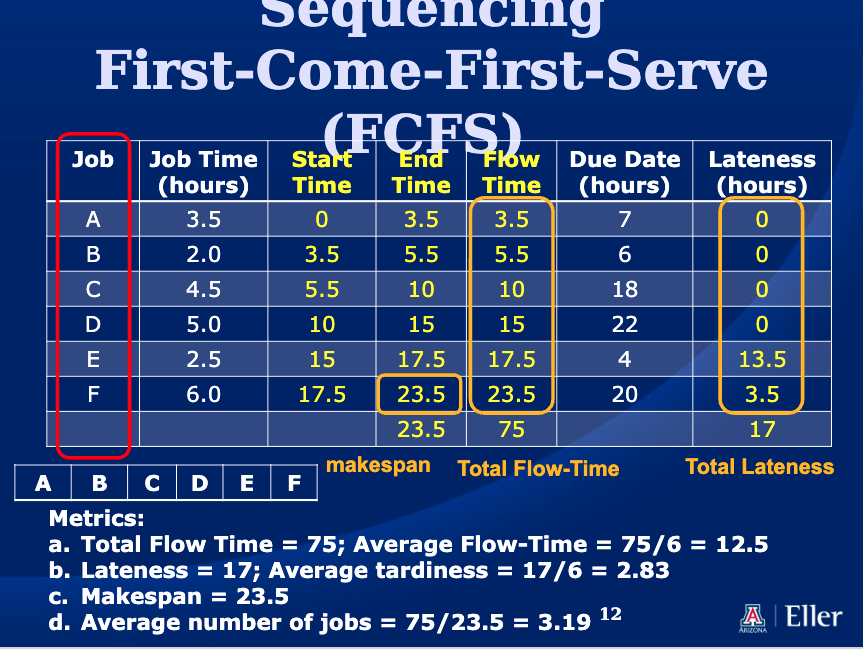
SPT Example: Similar metrics calculated, demonstrating efficiency.
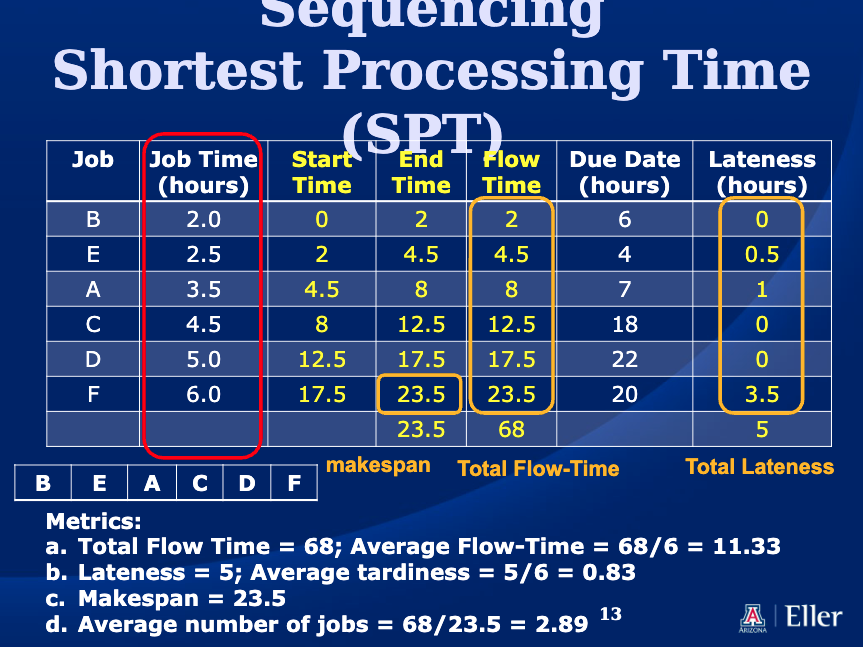
EDD Example: Analyzed to optimize lateness.
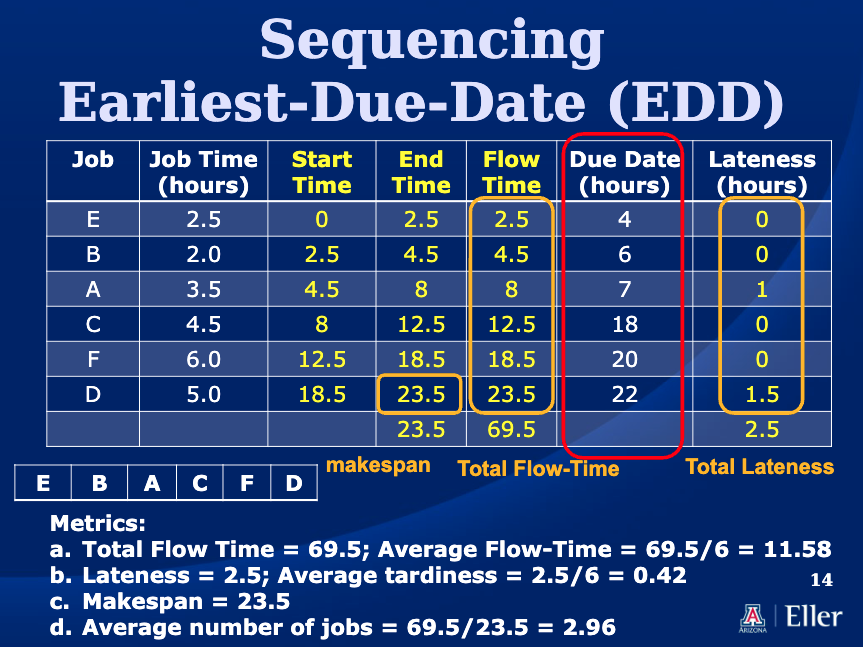
CR Example: Jobs sequenced using Critical Ratio with resulting metrics detailed.
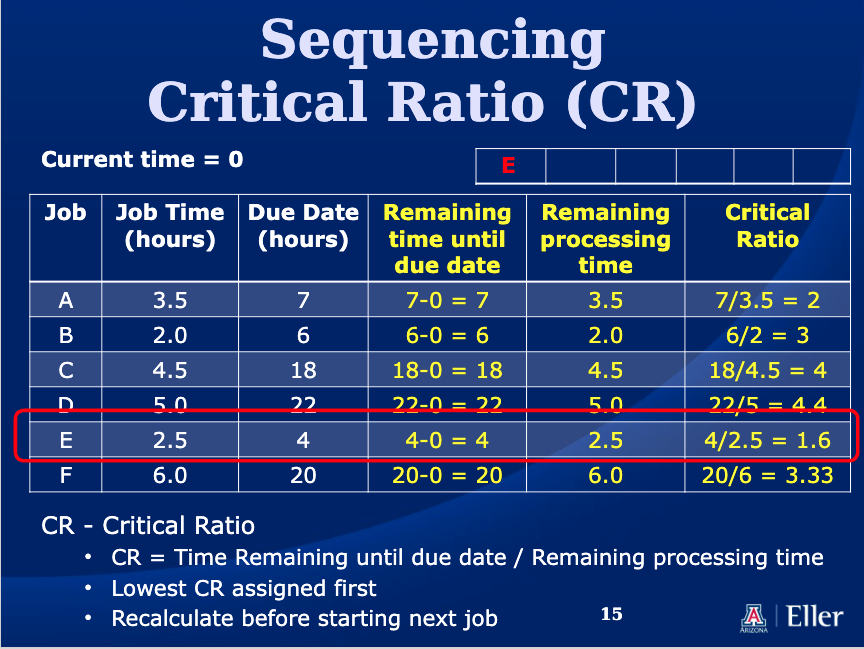
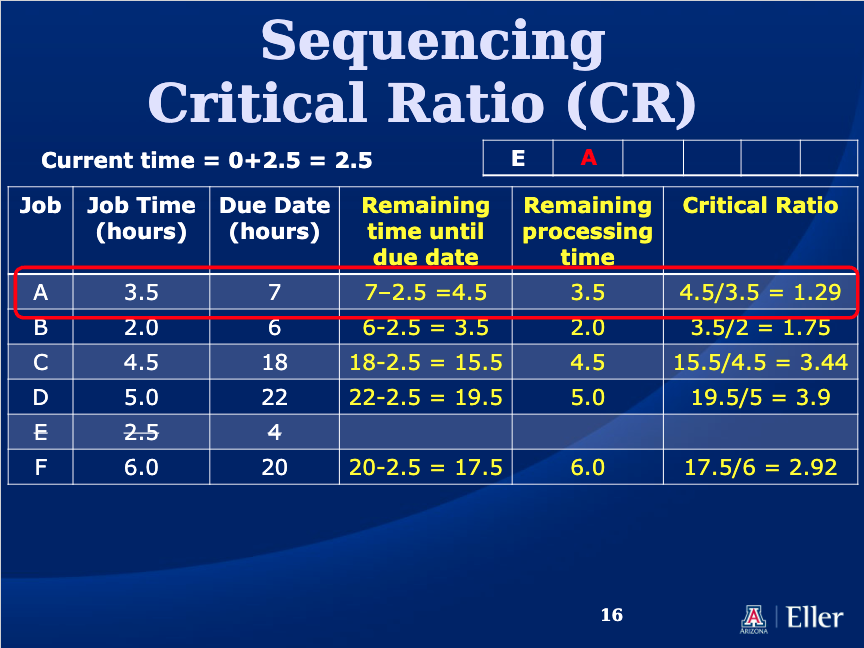
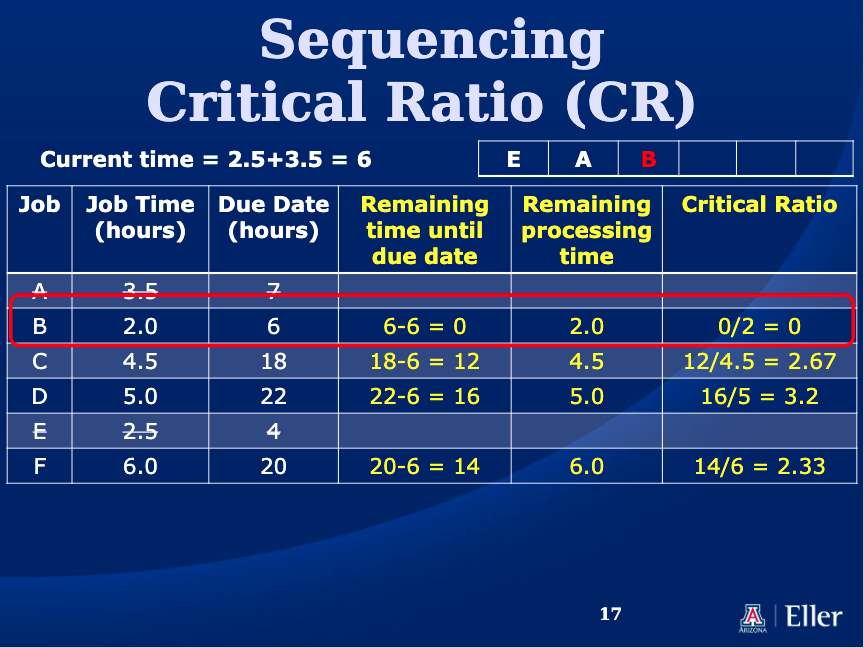
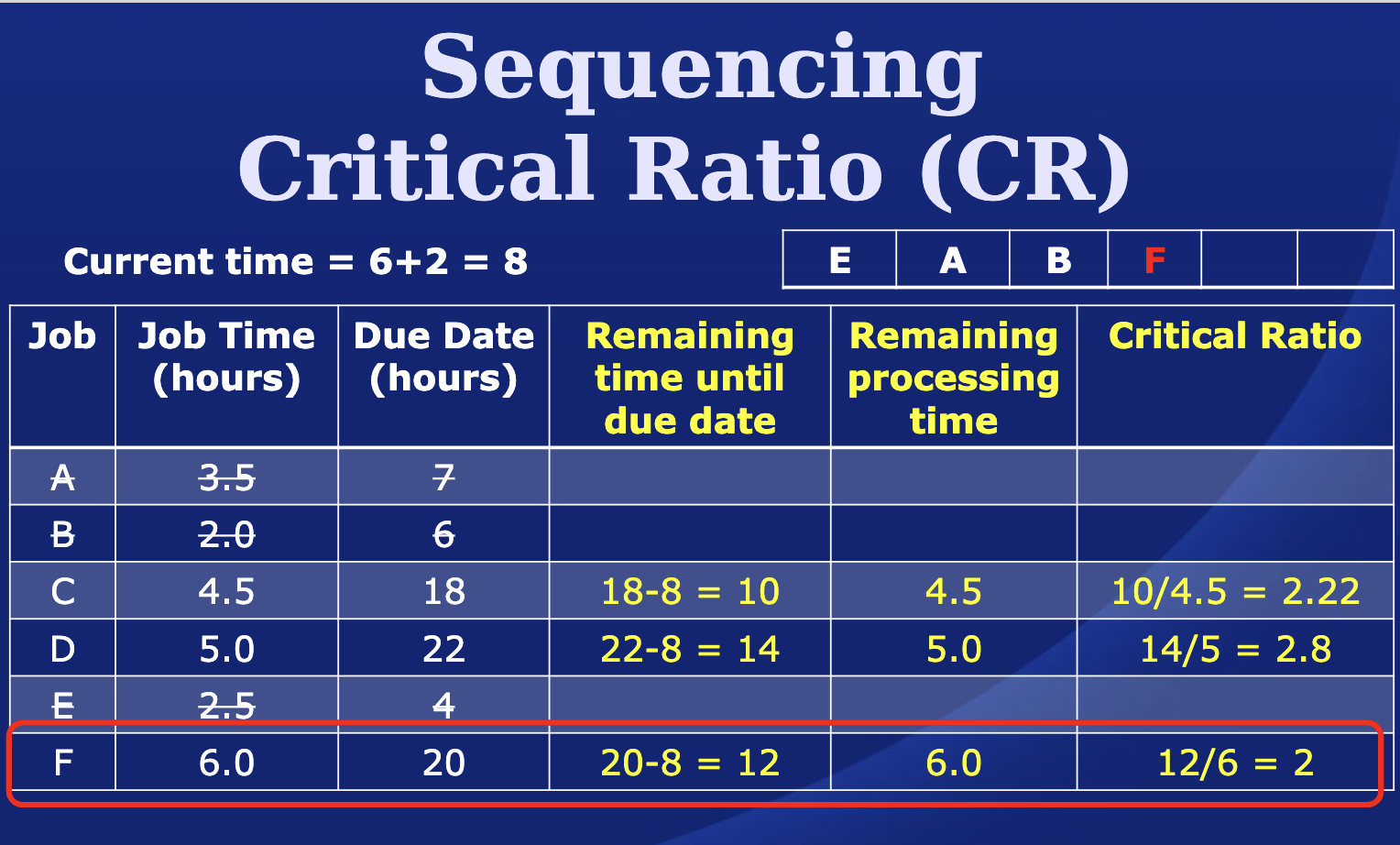
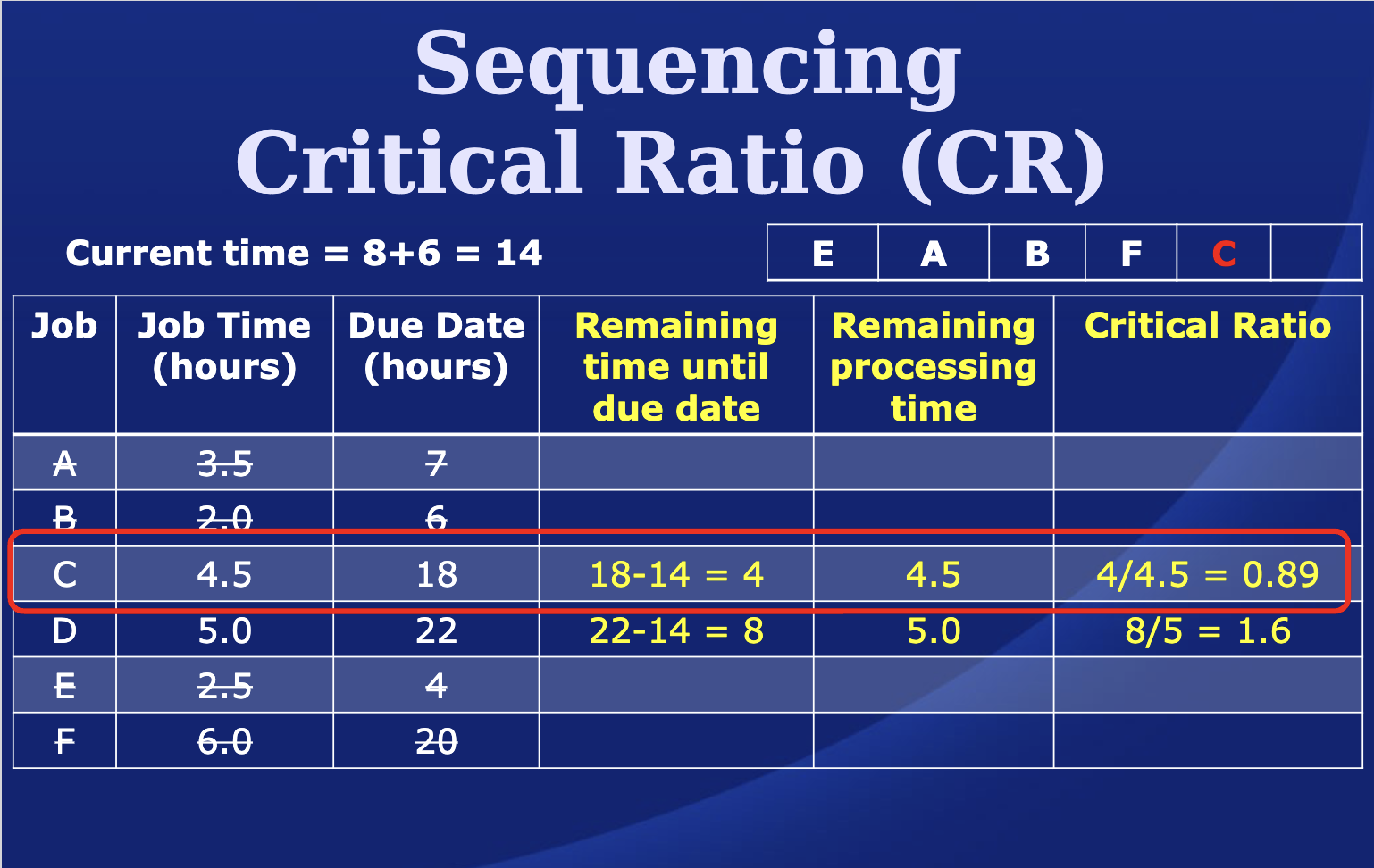
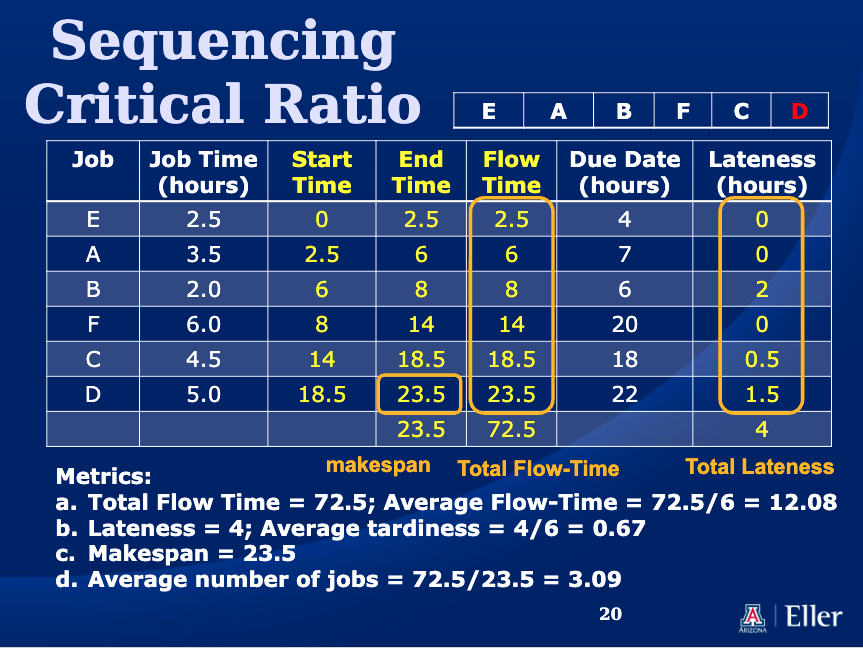
Priority Rules Comparison
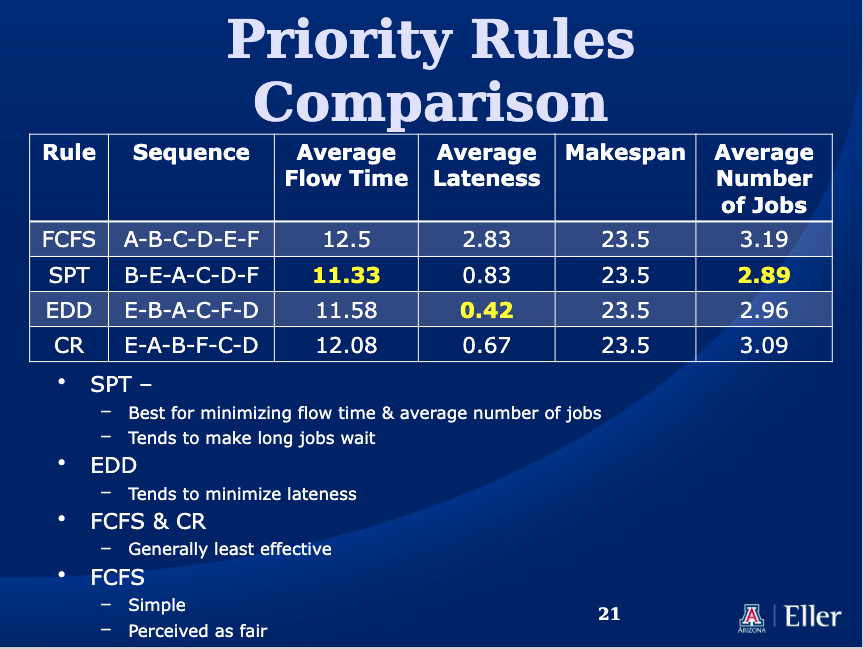
Two Work Center Sequencing
Defintion: Must follow same two - step sequence, all jobs must be completed at first work center before moving to second work center
Job time known and constant
Job time independent of sequence
Goal : Minimize makespan
Johnson's Rule
Definition: Technique to minimize makespan for jobs processed at two work centers with the same sequence.
Method:
List jobs and times at each work center
Select job with the shortest processing time for scheduling.
If shortest time is at first wrk center, schedule that job first
If shortest time is at scnd wrk center, schedule that job last
Repeat steps working towards center of the sequence Scheduled until all jobs are processed.
Method Example
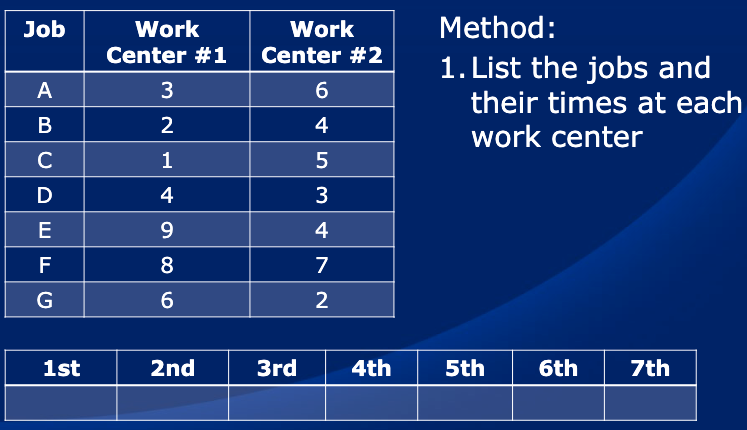
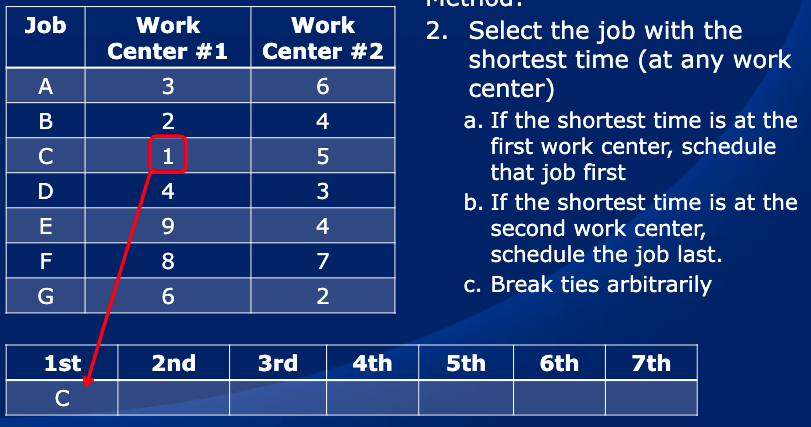
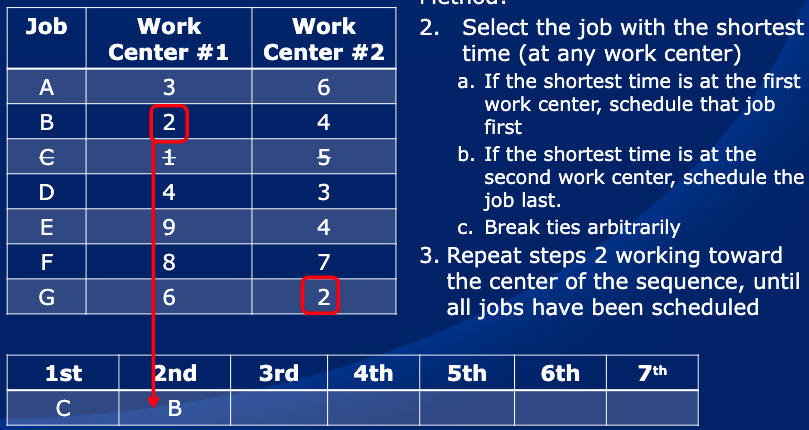
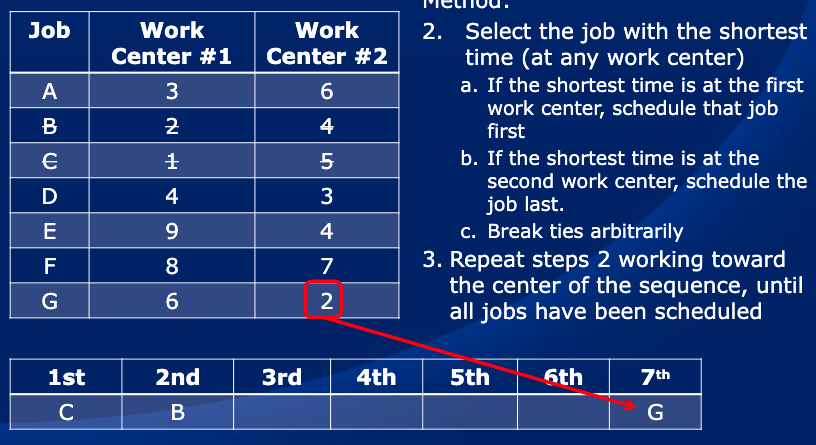
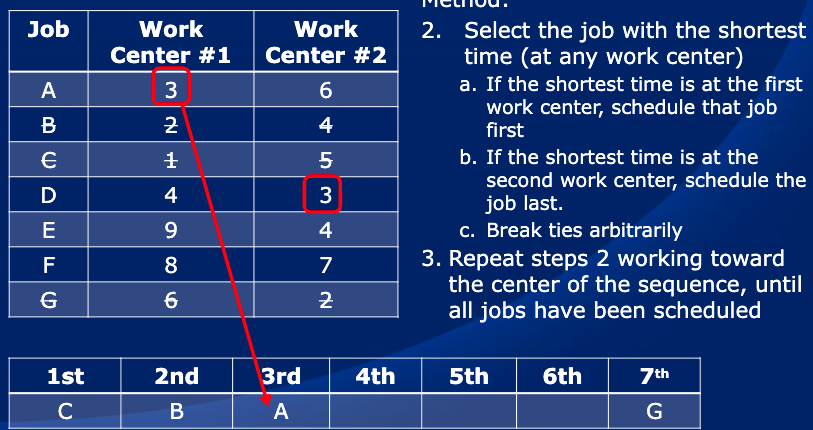
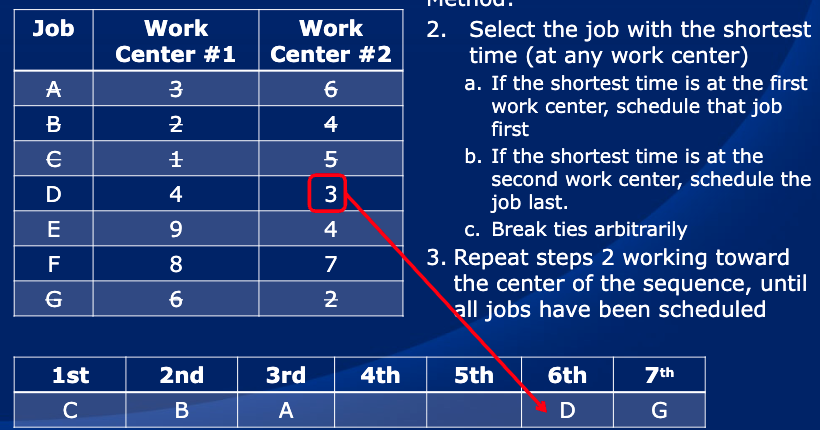
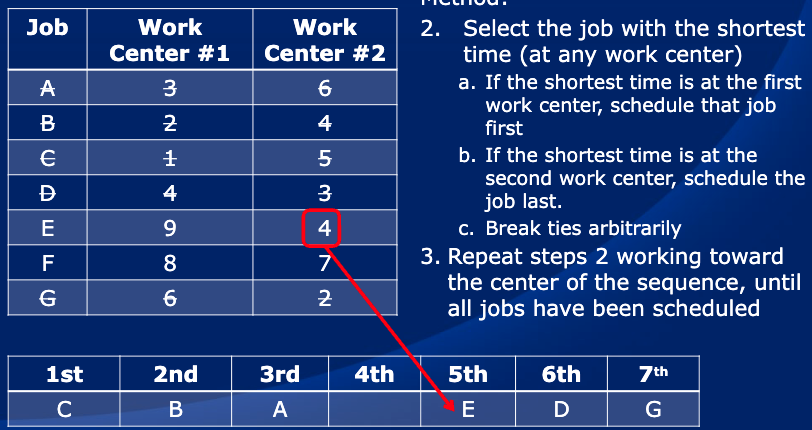
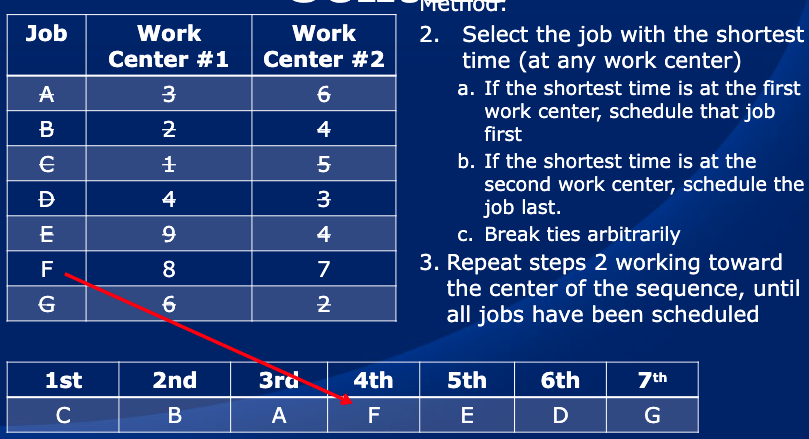
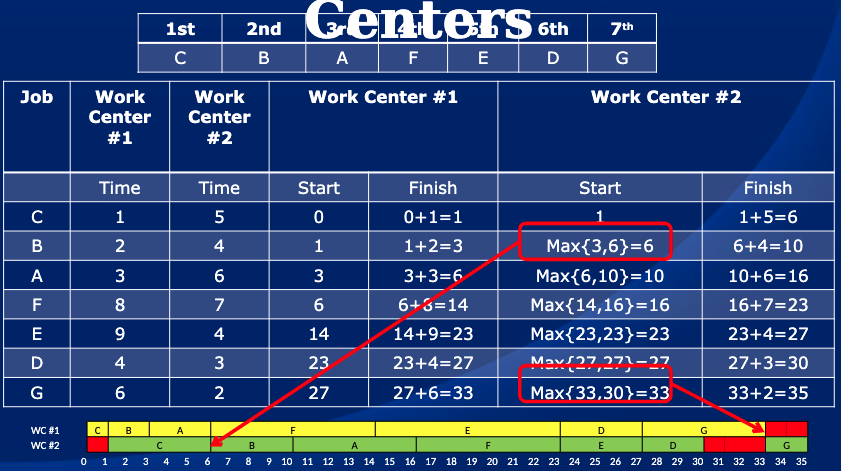
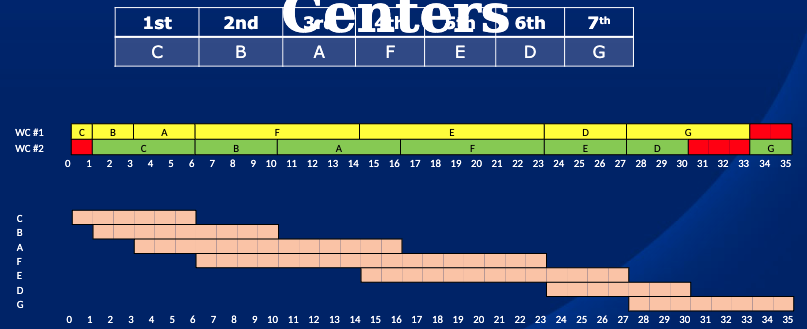
Assignment Model for Loading
Goal:
Optimal assignment of tasks to resources.
Hungarian Method:
Step-by-step method to find the lowest cost solution, including row/column reductions.
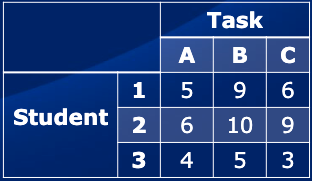
Hungarian Method Steps
Row Reduction:
Subtract smallest number in each row from every number in row
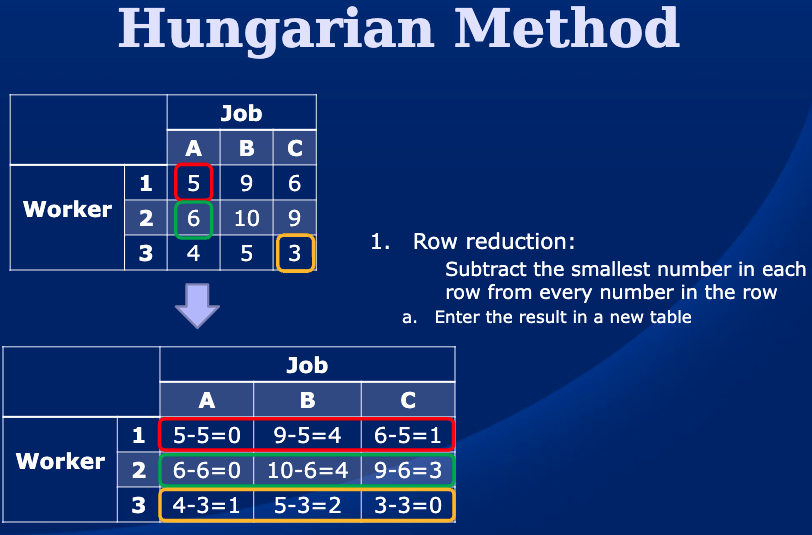
Column Reduction:
Subtract smallest numbr in each clmn from every numbr in clmn
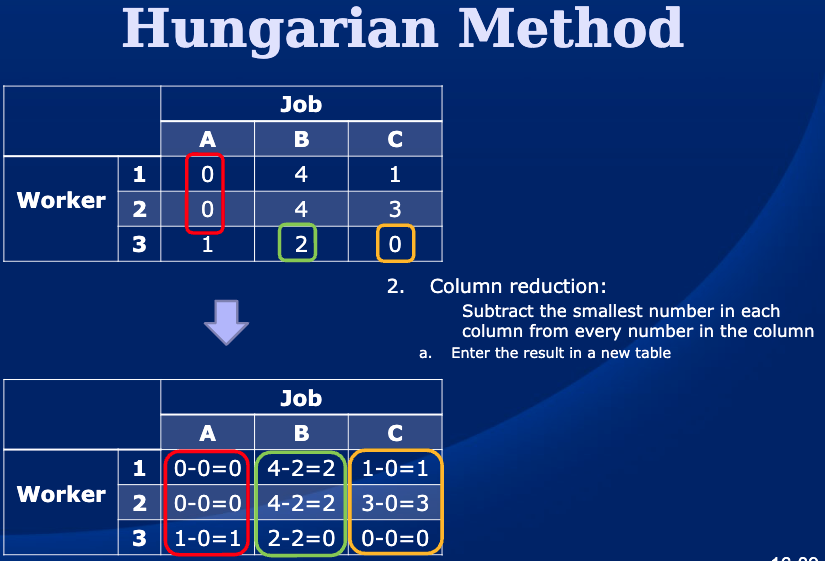
Evaluate whether optimum assignment can be made
Determing minimum num of lines to cross all zeros
if num of lines = num of rows go step 6, if not go step 4
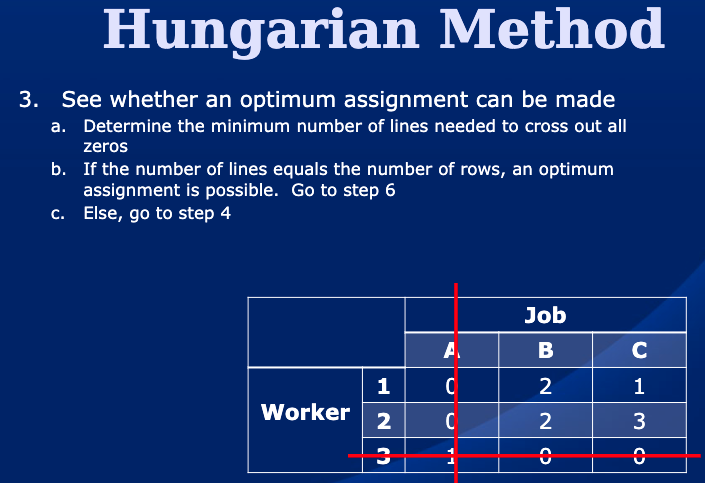
If num of line less than num of rows, modify table
subtract smallest uncovered num from every uncovered num
add smllest uncovered num to nums at intrsct of cross out lines
nums crossed out but not at intersection of cross out lines carrry over unchanged to next table
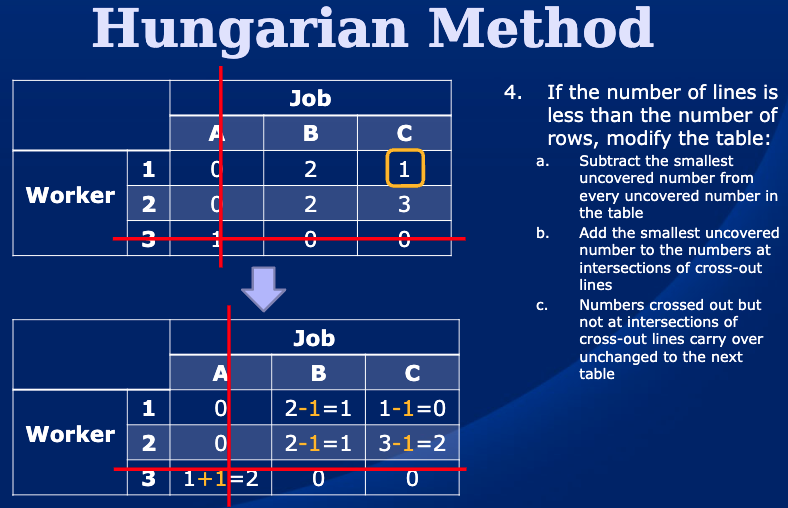
Repeat steps 3 and 4 until optimal table is obtained
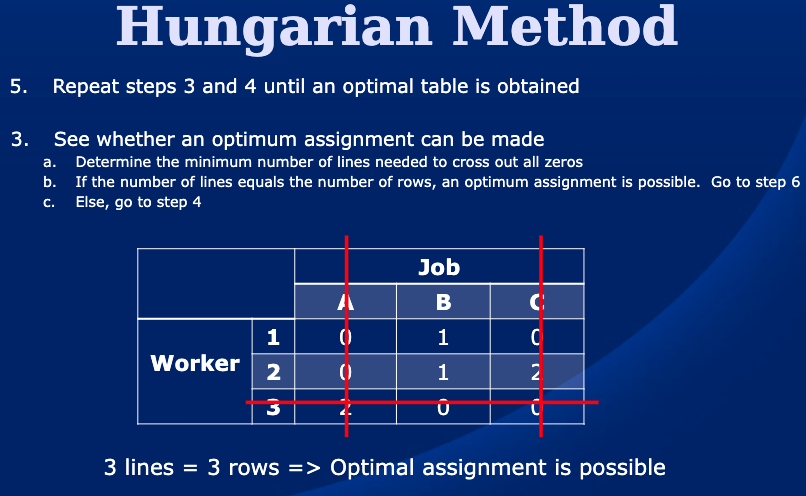
Make assignments
Begin with rows or columns with only one zero
match items that have zeros, using only 1 match for each row and column
eliminate both the row and column after the match
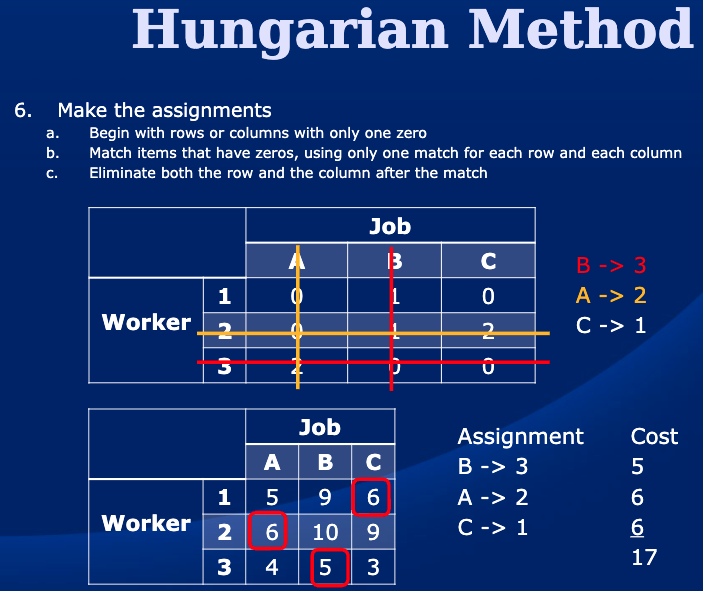
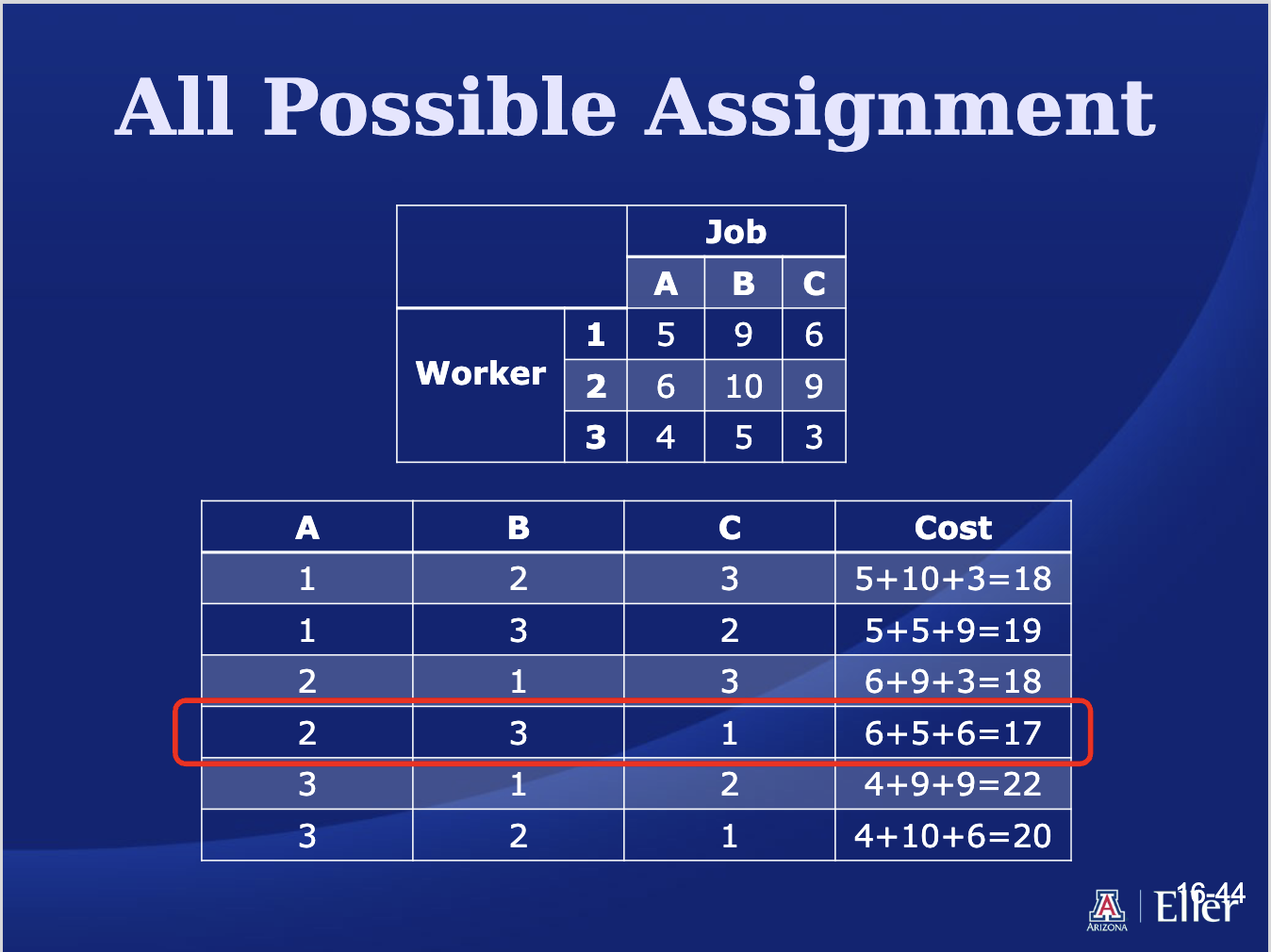
Scheduling Challenges
Challenges include variability in setup times, processing times, interruptions, and job set changes.
No exact method for optimal schedules, making it a challenge for managers.
Strategies to Minimize Scheduling Challenges
Set realistic due dates.
Focus on bottleneck operations to increase capacity.
Schedule according to bottlenecks and consider splitting large jobs into smaller batches.